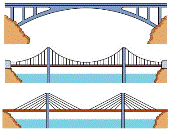Civil and Environmental Engineering, Department of

Department of Civil and Environmental Engineering: Faculty Publications
Document Type
Article
Date of this Version
2017
Citation
Botros, M.M., Hassan, A.A. and Sorial, G.A. (2017) Role of Fungal Biomass in N-Hexane Biofiltration. Advances in Microbiology, 7, 673-688. https://doi.org/10.4236/aim.2017.710053
Abstract
The biofiltration of n-hexane is studied to optimize determinants factors of hydrophobic VOC filtration efficiency. Four trickle-bed air biofilters (TBABs) were employed; two of which were supplied with nutrients buffered at a neutral pH, while another two at an acidic pH of 4 to induce and enhance fungal growth. The loading rate of n-hexane was kept constant in all TBABs at 13 g/m3/h. At each pH levels studied, the biomass of the TBABs was pre-acclimated using different ratios of n-hexane and methanol. The fungal biomass responsible for the degradation of n-hexane was then examined and quantified. Dichloran Rose Bengal Chloramphenicol agar was used for fungi quantification, and optical microscopy for classification. Effluent biomass was validated by measuring volatile suspended solids. Fungal counts resulting from n-hexane biodegradation were related to nitrate and carbon consumption. It was found that n-hexane elimination capacity closely followed biomass growth, and reached a steady-state at an optimum biomass density of roughly 3000 cfu/ml. Major shifts in fungal species were observed in all TBABs. Dominant fungal species grew slowly to become the most numerous, and were found to provide maximum elimination capacity, although TBABs pre-acclimated to higher methanol concentrations took less time to reach this steady-state. It was concluded, therefore, that steady and monitored growth of TBAB biomass is an essential factor in maximizing fungi’s ability to metabolize VOCs and that a new ecological biofiltration model may be the most effective at VOC purification.


Comments
Copyright © 2017 by authors and Scientific Research Publishing Inc. This work is licensed under the Creative Commons Attribution International License (CC BY 4.0).